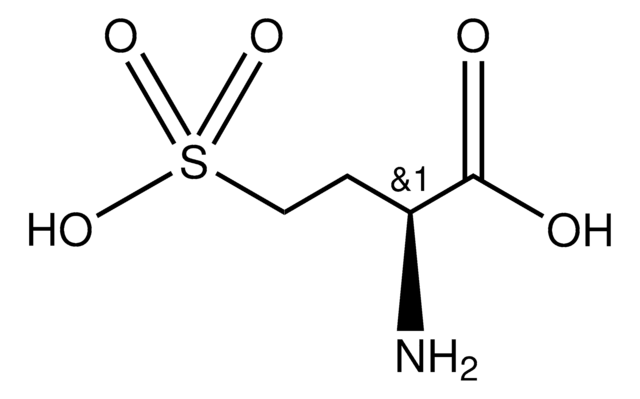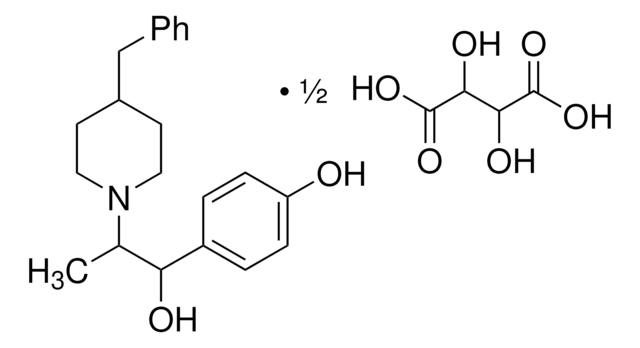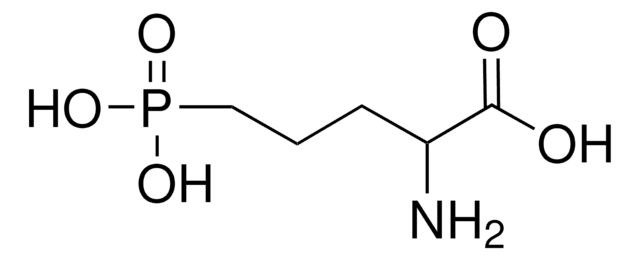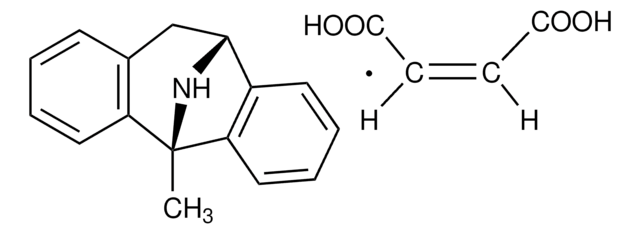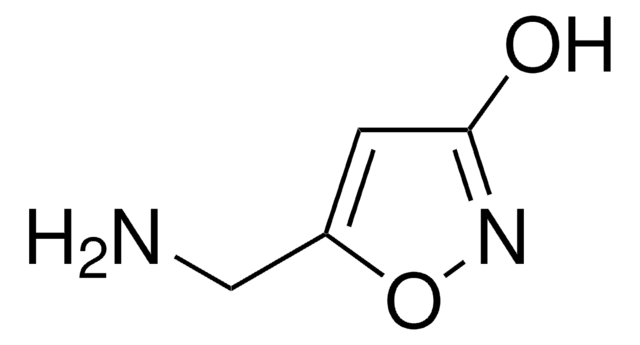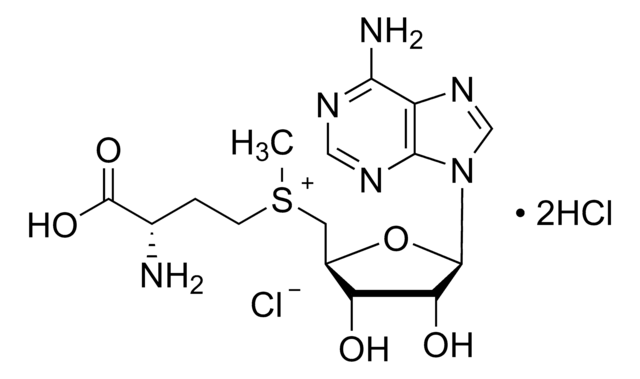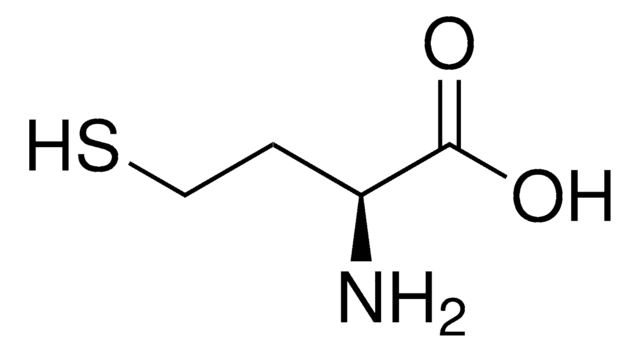Kluczowe dokumenty
P1999
PEAQX tetrasodium hydrate
≥98% (HPLC)
Synonim(y):
NVP-AAM077 tetrasodium hydrate, [[[(1S)-1-(4-Bromophenyl)ethyl]amino](1,2,3,4-tetrahydro-2,3-dioxo-5-quinoxalinyl)methyl] phosphonic acid tetrasodium hydrate
About This Item
Polecane produkty
Poziom jakości
Próba
≥98% (HPLC)
Formularz
powder
warunki przechowywania
desiccated
kolor
white to beige
rozpuszczalność
water: 10 mg/mL
temp. przechowywania
−20°C
ciąg SMILES
[Na+].[Na+].[Na+].[Na+].[H]O[H].C[C@H](NC(c1cccc2nc([O-])c([O-])nc12)P([O-])([O-])=O)c3ccc(Br)cc3
InChI
1S/C17H17BrN3O5P.4Na.H2O/c1-9(10-5-7-11(18)8-6-10)19-17(27(24,25)26)12-3-2-4-13-14(12)21-16(23)15(22)20-13;;;;;/h2-9,17,19H,1H3,(H,20,22)(H,21,23)(H2,24,25,26);;;;;1H2/q;4*+1;/p-4/t9-,17?;;;;;/m0...../s1
Klucz InChI
SMGAGBKXHAHCGQ-VSYRWHDMSA-J
Zastosowanie
Działania biochem./fizjol.
Cechy i korzyści
Hasło ostrzegawcze
Warning
Zwroty wskazujące rodzaj zagrożenia
Zwroty wskazujące środki ostrożności
Klasyfikacja zagrożeń
Acute Tox. 4 Oral - Eye Irrit. 2 - Skin Irrit. 2 - STOT SE 3
Organy docelowe
Respiratory system
Kod klasy składowania
11 - Combustible Solids
Klasa zagrożenia wodnego (WGK)
WGK 3
Temperatura zapłonu (°F)
Not applicable
Temperatura zapłonu (°C)
Not applicable
Środki ochrony indywidualnej
dust mask type N95 (US), Eyeshields, Gloves
Wybierz jedną z najnowszych wersji:
Masz już ten produkt?
Dokumenty związane z niedawno zakupionymi produktami zostały zamieszczone w Bibliotece dokumentów.
Klienci oglądali również te produkty
Produkty
We offers many products related to ion channel family glutamate receptors for your research needs.
Nasz zespół naukowców ma doświadczenie we wszystkich obszarach badań, w tym w naukach przyrodniczych, materiałoznawstwie, syntezie chemicznej, chromatografii, analityce i wielu innych dziedzinach.
Skontaktuj się z zespołem ds. pomocy technicznej